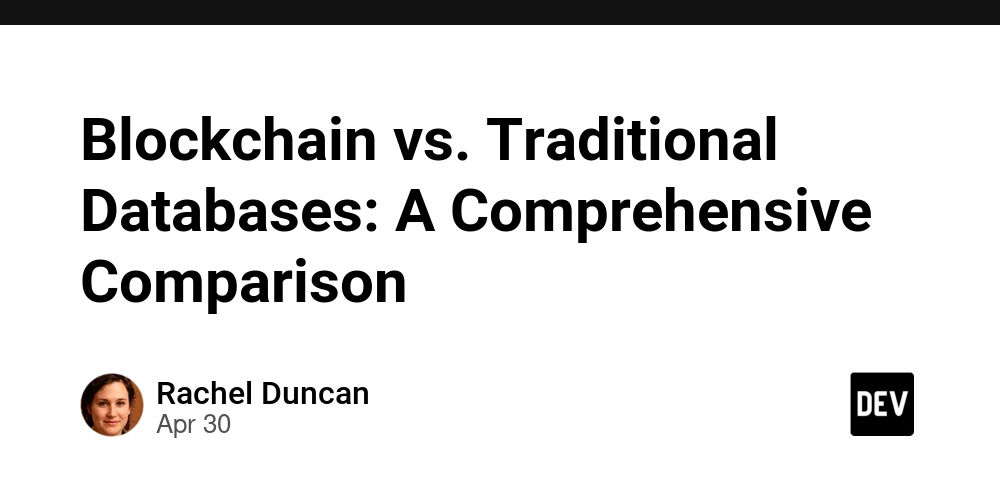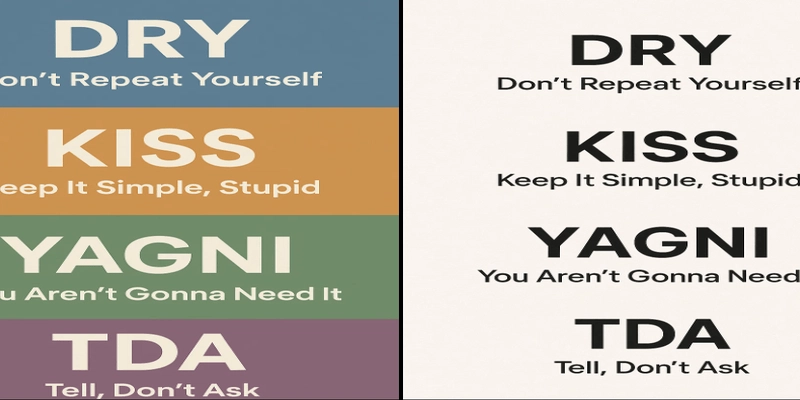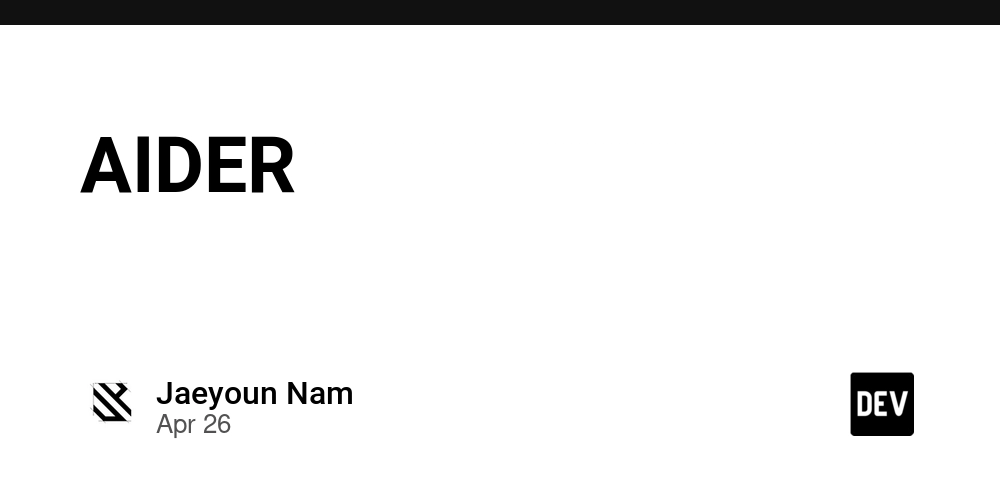Master JavaScript Error Tracking: 7 Essential Techniques for Reliable Applications
As a best-selling author, I invite you to explore my books on Amazon. Don't forget to follow me on Medium and show your support. Thank you! Your support means the world! JavaScript error tracking isn't just about catching errors; it's about understanding them, preventing them, and learning from them. I've spent years building error monitoring systems across various projects, and I've found that proper error handling often makes the difference between applications that thrive and those that constantly frustrate users. Effective error tracking requires a systematic approach that goes beyond basic try-catch blocks. It needs to capture context, prioritize critical issues, and provide actionable insights. Here's my comprehensive guide to building a robust JavaScript error tracking system. Contextual Error Capturing The most valuable error reports include context about what was happening when the error occurred. Without context, debugging becomes a guessing game. I always implement a global error handler as the first line of defense: window.addEventListener('error', function(event) { const { message, filename, lineno, colno, error } = event; // Collect environmental context const context = { url: window.location.href, userAgent: navigator.userAgent, timestamp: new Date().toISOString(), viewportWidth: window.innerWidth, viewportHeight: window.innerHeight, // Add application-specific state here }; // Send to tracking system reportError({ type: 'runtime', message, stack: error?.stack, lineNumber: lineno, columnNumber: colno, fileName: filename, context }); }); For promise rejections, which aren't caught by the standard error handler: window.addEventListener('unhandledrejection', function(event) { reportError({ type: 'promise', message: event.reason?.message || 'Unhandled Promise Rejection', stack: event.reason?.stack, context: { url: window.location.href, timestamp: new Date().toISOString() } }); }); In React applications, I implement error boundaries to catch component errors: class ErrorBoundary extends React.Component { constructor(props) { super(props); this.state = { hasError: false }; } static getDerivedStateFromError(error) { return { hasError: true }; } componentDidCatch(error, info) { reportError({ type: 'react', message: error.message, stack: error.stack, componentStack: info.componentStack, componentName: this.constructor.name, props: JSON.stringify(this.props) }); } render() { if (this.state.hasError) { return this.props.fallback || Something went wrong.; } return this.props.children; } } Stack Trace Enhancement Raw JavaScript stack traces, especially from minified code, can be cryptic. Source maps are essential for translating these back to readable code: async function enhanceStackTrace(stack, sourceMapUrl) { if (!stack) return stack; try { const sourceMapConsumer = await new SourceMapConsumer(sourceMapUrl); const lines = stack.split('\n'); const enhancedLines = lines.map(line => { const match = line.match(/at\s+(.+)\s+\((.+):(\d+):(\d+)\)/); if (!match) return line; const [_, functionName, file, lineNumber, columnNumber] = match; const position = sourceMapConsumer.originalPositionFor({ line: parseInt(lineNumber, 10), column: parseInt(columnNumber, 10) }); if (!position.source) return line; return `at ${functionName} (${position.source}:${position.line}:${position.column})`; }); sourceMapConsumer.destroy(); return enhancedLines.join('\n'); } catch (err) { console.warn('Failed to enhance stack trace:', err); return stack; } } I've found that maintaining source maps securely on your server and processing them during error reporting provides the best balance between debugging capability and code protection. Error Categorization Not all errors are equal. Some might be transient network issues while others could be critical bugs affecting core functionality. I categorize errors using a combination of pattern matching and severity assessment: function categorizeError(error) { // Define error patterns const patterns = [ { regex: /network|failed to fetch|cors|timeout/i, category: 'network', severity: 'warning' }, { regex: /undefined is not a function|cannot read property/i, category: 'type', severity: 'error' }, { regex: /syntax error|unexpected token/i, category: 'syntax', severity: 'critical' }, { regex: /out of memory|stack size exceeded/i, category: 'memory', severity: 'critical' } ]; const message = error.message || ''; const stack = error.stack || ''; const content = message + ' ' + stack; // Find ma

As a best-selling author, I invite you to explore my books on Amazon. Don't forget to follow me on Medium and show your support. Thank you! Your support means the world!
JavaScript error tracking isn't just about catching errors; it's about understanding them, preventing them, and learning from them. I've spent years building error monitoring systems across various projects, and I've found that proper error handling often makes the difference between applications that thrive and those that constantly frustrate users.
Effective error tracking requires a systematic approach that goes beyond basic try-catch blocks. It needs to capture context, prioritize critical issues, and provide actionable insights. Here's my comprehensive guide to building a robust JavaScript error tracking system.
Contextual Error Capturing
The most valuable error reports include context about what was happening when the error occurred. Without context, debugging becomes a guessing game.
I always implement a global error handler as the first line of defense:
window.addEventListener('error', function(event) {
const { message, filename, lineno, colno, error } = event;
// Collect environmental context
const context = {
url: window.location.href,
userAgent: navigator.userAgent,
timestamp: new Date().toISOString(),
viewportWidth: window.innerWidth,
viewportHeight: window.innerHeight,
// Add application-specific state here
};
// Send to tracking system
reportError({
type: 'runtime',
message,
stack: error?.stack,
lineNumber: lineno,
columnNumber: colno,
fileName: filename,
context
});
});
For promise rejections, which aren't caught by the standard error handler:
window.addEventListener('unhandledrejection', function(event) {
reportError({
type: 'promise',
message: event.reason?.message || 'Unhandled Promise Rejection',
stack: event.reason?.stack,
context: {
url: window.location.href,
timestamp: new Date().toISOString()
}
});
});
In React applications, I implement error boundaries to catch component errors:
class ErrorBoundary extends React.Component {
constructor(props) {
super(props);
this.state = { hasError: false };
}
static getDerivedStateFromError(error) {
return { hasError: true };
}
componentDidCatch(error, info) {
reportError({
type: 'react',
message: error.message,
stack: error.stack,
componentStack: info.componentStack,
componentName: this.constructor.name,
props: JSON.stringify(this.props)
});
}
render() {
if (this.state.hasError) {
return this.props.fallback || <h2>Something went wrong.</h2>;
}
return this.props.children;
}
}
Stack Trace Enhancement
Raw JavaScript stack traces, especially from minified code, can be cryptic. Source maps are essential for translating these back to readable code:
async function enhanceStackTrace(stack, sourceMapUrl) {
if (!stack) return stack;
try {
const sourceMapConsumer = await new SourceMapConsumer(sourceMapUrl);
const lines = stack.split('\n');
const enhancedLines = lines.map(line => {
const match = line.match(/at\s+(.+)\s+\((.+):(\d+):(\d+)\)/);
if (!match) return line;
const [_, functionName, file, lineNumber, columnNumber] = match;
const position = sourceMapConsumer.originalPositionFor({
line: parseInt(lineNumber, 10),
column: parseInt(columnNumber, 10)
});
if (!position.source) return line;
return `at ${functionName} (${position.source}:${position.line}:${position.column})`;
});
sourceMapConsumer.destroy();
return enhancedLines.join('\n');
} catch (err) {
console.warn('Failed to enhance stack trace:', err);
return stack;
}
}
I've found that maintaining source maps securely on your server and processing them during error reporting provides the best balance between debugging capability and code protection.
Error Categorization
Not all errors are equal. Some might be transient network issues while others could be critical bugs affecting core functionality.
I categorize errors using a combination of pattern matching and severity assessment:
function categorizeError(error) {
// Define error patterns
const patterns = [
{
regex: /network|failed to fetch|cors|timeout/i,
category: 'network',
severity: 'warning'
},
{
regex: /undefined is not a function|cannot read property/i,
category: 'type',
severity: 'error'
},
{
regex: /syntax error|unexpected token/i,
category: 'syntax',
severity: 'critical'
},
{
regex: /out of memory|stack size exceeded/i,
category: 'memory',
severity: 'critical'
}
];
const message = error.message || '';
const stack = error.stack || '';
const content = message + ' ' + stack;
// Find matching pattern
for (const pattern of patterns) {
if (pattern.regex.test(content)) {
return {
category: pattern.category,
severity: pattern.severity
};
}
}
// Default categorization
return {
category: 'unknown',
severity: 'error'
};
}
Grouping similar errors reduces noise and helps focus on distinct issues. I use a fingerprinting technique:
function getErrorFingerprint(error) {
const message = error.message || '';
const stack = error.stack || '';
// Extract the first line from the stack trace (most specific to the error location)
const stackLine = stack.split('\n')[1] || '';
// Remove variable values from the message and line numbers that might change
const normalizedMessage = message.replace(/(['"]).*?\1/g, '$1...$1')
.replace(/\d+/g, 'N');
// Create a stable identifier
return md5(normalizedMessage + ' at ' + stackLine.trim());
}
Error Throttling
Error floods can overwhelm your tracking system. I implement rate limiting with exponential backoff:
class ErrorThrottler {
constructor() {
this.errorCounts = new Map();
this.lastReported = new Map();
}
shouldReport(errorFingerprint) {
const now = Date.now();
const count = (this.errorCounts.get(errorFingerprint) || 0) + 1;
this.errorCounts.set(errorFingerprint, count);
const lastTime = this.lastReported.get(errorFingerprint) || 0;
const timeSinceLast = now - lastTime;
// Calculate backoff time: 5 seconds × 2^(count-1), maxed at 2 hours
const backoffTime = Math.min(5000 * Math.pow(2, count - 1), 7200000);
if (timeSinceLast < backoffTime) {
return false;
}
this.lastReported.set(errorFingerprint, now);
return true;
}
reset(errorFingerprint) {
this.errorCounts.delete(errorFingerprint);
this.lastReported.delete(errorFingerprint);
}
}
This approach ensures critical issues remain visible without flooding your system.
Custom Error Types
Creating domain-specific error classes improves error handling precision:
class ApiError extends Error {
constructor(message, statusCode, endpoint, requestData) {
super(message);
this.name = 'ApiError';
this.statusCode = statusCode;
this.endpoint = endpoint;
this.requestData = requestData;
this.timestamp = new Date().toISOString();
// Capture stack trace, excluding constructor call
if (Error.captureStackTrace) {
Error.captureStackTrace(this, ApiError);
}
}
toJSON() {
return {
name: this.name,
message: this.message,
statusCode: this.statusCode,
endpoint: this.endpoint,
timestamp: this.timestamp
};
}
}
// Usage example
async function fetchUserData(userId) {
try {
const response = await fetch(`/api/users/${userId}`);
if (!response.ok) {
throw new ApiError(
`Failed to fetch user data: ${response.statusText}`,
response.status,
`/api/users/${userId}`,
{ userId }
);
}
return await response.json();
} catch (error) {
if (error instanceof ApiError) {
// Handle API-specific error
errorTracker.trackError(error);
return null;
}
// Handle other errors (network, parsing, etc.)
errorTracker.trackError(new ApiError(
'Network or parsing error',
0,
`/api/users/${userId}`,
{ userId, originalError: error.message }
));
return null;
}
}
This approach provides structured error data that's easier to analyze and categorize.
User Impact Tracking
Connecting errors to business metrics helps prioritize fixes:
class UserImpactTracker {
constructor() {
this.sessionId = generateUniqueId();
this.userJourney = [];
this.errorsEncountered = new Map();
}
recordStep(stepName, metadata = {}) {
this.userJourney.push({
step: stepName,
timestamp: Date.now(),
metadata
});
}
recordError(error, stepName) {
const errorFingerprint = getErrorFingerprint(error);
if (!this.errorsEncountered.has(errorFingerprint)) {
this.errorsEncountered.set(errorFingerprint, []);
}
this.errorsEncountered.get(errorFingerprint).push({
timestamp: Date.now(),
step: stepName || this.getCurrentStep(),
errorMessage: error.message
});
// Associate error with user journey
reportError({
...error,
sessionId: this.sessionId,
currentStep: stepName || this.getCurrentStep(),
journeyLength: this.userJourney.length
});
}
getCurrentStep() {
if (this.userJourney.length === 0) return 'app_start';
return this.userJourney[this.userJourney.length - 1].step;
}
getJourneyAnalytics() {
return {
sessionId: this.sessionId,
steps: this.userJourney.length,
completedJourney: this.hasCompletedJourney(),
errorCount: Array.from(this.errorsEncountered.values())
.reduce((total, occurrences) => total + occurrences.length, 0),
uniqueErrorCount: this.errorsEncountered.size
};
}
hasCompletedJourney() {
// Implement your business logic for a completed journey
return this.userJourney.some(step => step.step === 'checkout_complete');
}
}
This allows calculation of critical metrics like:
- Error rates by journey step
- Conversion impact of specific errors
- User abandonment correlation with error occurrence
Self-Healing Mechanisms
Certain errors can be automatically recovered from:
class ResilienceWrapper {
constructor(options = {}) {
this.maxRetries = options.maxRetries || 3;
this.backoffFactor = options.backoffFactor || 2;
this.initialDelay = options.initialDelay || 1000;
this.recoveryStrategies = options.recoveryStrategies || {};
}
async retryable(fn, options = {}) {
const context = options.context || {};
const operationName = options.name || fn.name || 'anonymous operation';
let lastError;
for (let attempt = 1; attempt <= this.maxRetries; attempt++) {
try {
return await fn(context);
} catch (error) {
lastError = error;
// Log the retry attempt
console.warn(`Operation ${operationName} failed (attempt ${attempt}/${this.maxRetries}):`, error.message);
// Check if we can apply a recovery strategy
const strategyName = this.findMatchingStrategy(error);
if (strategyName) {
try {
const recoveryStrategy = this.recoveryStrategies[strategyName];
const recoveryResult = await recoveryStrategy(error, context);
// If recovery was successful, return the result
if (recoveryResult.recovered) {
console.info(`Recovery strategy '${strategyName}' succeeded for ${operationName}`);
return recoveryResult.value;
}
} catch (recoveryError) {
console.error(`Recovery strategy '${strategyName}' failed:`, recoveryError);
}
}
// If this is the last attempt, don't delay
if (attempt === this.maxRetries) break;
// Calculate backoff delay
const delay = this.initialDelay * Math.pow(this.backoffFactor, attempt - 1);
await new Promise(resolve => setTimeout(resolve, delay));
}
}
// If we've exhausted all retries and recovery strategies, report and throw
reportError({
...lastError,
operationName,
retriesAttempted: this.maxRetries
});
throw lastError;
}
findMatchingStrategy(error) {
return Object.keys(this.recoveryStrategies).find(strategyName => {
const strategy = this.recoveryStrategies[strategyName];
return strategy.matches && strategy.matches(error);
});
}
}
// Example usage:
const resilience = new ResilienceWrapper({
recoveryStrategies: {
cachedDataFallback: {
matches: (error) => error.name === 'ApiError' && error.statusCode >= 500,
execute: async (error, context) => {
const cachedData = localStorage.getItem(`cache_${context.endpoint}`);
if (cachedData) {
return {
recovered: true,
value: JSON.parse(cachedData)
};
}
return { recovered: false };
}
},
networkReroute: {
matches: (error) => error.message.includes('CORS') || error.message.includes('Network Error'),
execute: async (error, context) => {
// Try an alternative API endpoint or proxy
try {
const fallbackUrl = context.fallbackUrl || context.url.replace('api.', 'fallback-api.');
const response = await fetch(fallbackUrl, context.options);
const data = await response.json();
return {
recovered: true,
value: data
};
} catch {
return { recovered: false };
}
}
}
}
});
// Using the resilience wrapper
async function loadUserProfile(userId) {
return resilience.retryable(
async (context) => {
const response = await fetch(`/api/users/${userId}`);
if (!response.ok) throw new ApiError('User profile fetch failed', response.status, `/api/users/${userId}`);
const data = await response.json();
// Cache successful responses
localStorage.setItem(`cache_/api/users/${userId}`, JSON.stringify(data));
return data;
},
{
name: 'loadUserProfile',
context: {
endpoint: `/api/users/${userId}`,
fallbackUrl: `/api/backup/users/${userId}`
}
}
);
}
This approach can significantly improve application resilience.
Putting It All Together
Here's a complete error tracking system that incorporates all these techniques:
class EnhancedErrorTracker {
constructor(options = {}) {
this.endpoint = options.endpoint || '/api/errors';
this.appVersion = options.appVersion || '1.0.0';
this.sampleRate = options.sampleRate || 1.0; // 1.0 = track all errors
this.throttler = new ErrorThrottler();
this.userImpact = new UserImpactTracker();
this.sourceMapUrl = options.sourceMapUrl;
this.init();
}
init() {
window.addEventListener('error', this.handleGlobalError.bind(this));
window.addEventListener('unhandledrejection', this.handlePromiseRejection.bind(this));
// Record important user journey steps
if (typeof window.history.pushState === 'function') {
const originalPushState = window.history.pushState;
window.history.pushState = function() {
originalPushState.apply(this, arguments);
this.userImpact.recordStep('navigation', { path: window.location.pathname });
}.bind(window.history);
}
window.addEventListener('popstate', () => {
this.userImpact.recordStep('navigation', { path: window.location.pathname });
});
}
handleGlobalError(event) {
const { message, filename, lineno, colno, error } = event;
this.trackError({
type: 'runtime',
message,
source: filename,
lineno,
colno,
stack: error?.stack,
originalError: error
});
return true;
}
handlePromiseRejection(event) {
this.trackError({
type: 'promise',
message: event.reason?.message || 'Promise rejected',
stack: event.reason?.stack,
originalError: event.reason
});
}
async trackError(errorData) {
// Apply sampling
if (Math.random() > this.sampleRate) return;
const error = errorData.originalError || new Error(errorData.message);
const fingerprint = getErrorFingerprint(error);
// Apply throttling
if (!this.throttler.shouldReport(fingerprint)) return;
// Categorize error
const { category, severity } = categorizeError(error);
// Enhance stack trace if possible
let enhancedStack = errorData.stack;
if (this.sourceMapUrl && enhancedStack) {
enhancedStack = await enhanceStackTrace(enhancedStack, this.sourceMapUrl);
}
// Record user impact
this.userImpact.recordError(error);
const payload = {
...errorData,
stack: enhancedStack || errorData.stack,
fingerprint,
category,
severity,
timestamp: new Date().toISOString(),
appVersion: this.appVersion,
userAgent: navigator.userAgent,
url: window.location.href,
sessionId: this.userImpact.sessionId,
userJourney: this.userImpact.getJourneyAnalytics()
};
try {
const response = await fetch(this.endpoint, {
method: 'POST',
headers: { 'Content-Type': 'application/json' },
body: JSON.stringify(payload),
keepalive: true
});
if (!response.ok) {
console.error('Failed to send error report:', await response.text());
}
} catch (err) {
console.error('Error in error reporting:', err);
// Last resort - log to console
console.error('Original error details:', payload);
}
}
}
// Initialize tracker
const errorTracker = new EnhancedErrorTracker({
endpoint: 'https://errors.myapp.com/collect',
appVersion: APP_VERSION,
sampleRate: 0.9, // Track 90% of errors
sourceMapUrl: '/sourcemaps/'
});
Final Thoughts
Building an effective error tracking system is an investment that pays dividends in application reliability and user satisfaction. I've seen teams reduce critical bugs by over 70% through systematic error tracking and prioritization.
The key is thinking beyond individual errors to build a system that provides insights into patterns and impact. Start with basic error capturing, then gradually enhance your system with context, categorization, and user impact analysis.
Remember that error tracking isn't just about fixing bugs—it's about continuously improving your understanding of how users interact with your application and where they encounter friction. With these techniques in place, you'll transform errors from frustrating incidents into valuable opportunities for improvement.
101 Books
101 Books is an AI-driven publishing company co-founded by author Aarav Joshi. By leveraging advanced AI technology, we keep our publishing costs incredibly low—some books are priced as low as $4—making quality knowledge accessible to everyone.
Check out our book Golang Clean Code available on Amazon.
Stay tuned for updates and exciting news. When shopping for books, search for Aarav Joshi to find more of our titles. Use the provided link to enjoy special discounts!
Our Creations
Be sure to check out our creations:
Investor Central | Investor Central Spanish | Investor Central German | Smart Living | Epochs & Echoes | Puzzling Mysteries | Hindutva | Elite Dev | JS Schools
We are on Medium
Tech Koala Insights | Epochs & Echoes World | Investor Central Medium | Puzzling Mysteries Medium | Science & Epochs Medium | Modern Hindutva





























![[Free Webinar] Guide to Securing Your Entire Identity Lifecycle Against AI-Powered Threats](https://blogger.googleusercontent.com/img/b/R29vZ2xl/AVvXsEjqbZf4bsDp6ei3fmQ8swm7GB5XoRrhZSFE7ZNhRLFO49KlmdgpIDCZWMSv7rydpEShIrNb9crnH5p6mFZbURzO5HC9I4RlzJazBBw5aHOTmI38sqiZIWPldRqut4bTgegipjOk5VgktVOwCKF_ncLeBX-pMTO_GMVMfbzZbf8eAj21V04y_NiOaSApGkM/s1600/webinar-play.jpg?#)








































































































































![[The AI Show Episode 145]: OpenAI Releases o3 and o4-mini, AI Is Causing “Quiet Layoffs,” Executive Order on Youth AI Education & GPT-4o’s Controversial Update](https://www.marketingaiinstitute.com/hubfs/ep%20145%20cover.png)


































































































































































































































































































































































-xl.jpg)






























![New Hands-On iPhone 17 Dummy Video Shows Off Ultra-Thin Air Model, Updated Pro Designs [Video]](https://www.iclarified.com/images/news/97171/97171/97171-640.jpg)
![Apple Shares Trailer for First Immersive Feature Film 'Bono: Stories of Surrender' [Video]](https://www.iclarified.com/images/news/97168/97168/97168-640.jpg)




































































































